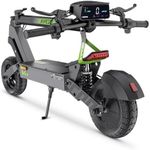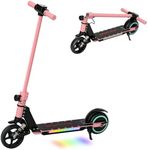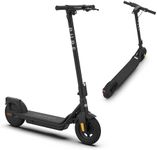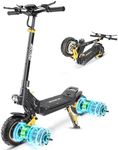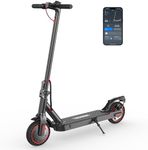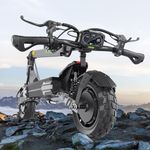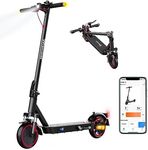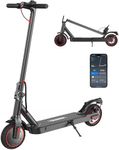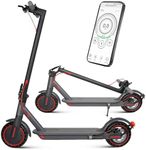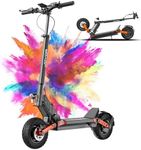Buying Guide for the Best Electric Scooters
Choosing the right electric scooter can be a fun and rewarding experience if you know what to look for. Electric scooters come in various shapes, sizes, and capabilities, so it's important to understand your needs and how different specifications can meet them. Whether you're looking for a scooter for commuting, leisure, or off-road adventures, understanding the key specs will help you make an informed decision.Battery LifeBattery life determines how far you can travel on a single charge. This is crucial because it affects how often you'll need to recharge your scooter. Battery life is usually measured in miles or kilometers. For short commutes, a battery life of 10-15 miles may be sufficient. For longer distances, look for scooters with a range of 20 miles or more. Consider your daily travel distance and choose a scooter with a battery life that exceeds this to ensure you don't run out of power unexpectedly.
Motor PowerMotor power, measured in watts, affects the scooter's speed and ability to handle inclines. A higher wattage means more power and better performance. For flat urban areas, a motor with 250-350 watts is usually adequate. If you plan to ride on hilly terrain or need faster acceleration, look for motors with 500 watts or more. Your choice should depend on the type of terrain you'll be riding on and how fast you want to go.
Weight CapacityWeight capacity indicates the maximum load the scooter can carry. This is important for safety and performance. Most scooters have a weight capacity ranging from 220 to 300 pounds. Choose a scooter that can comfortably support your weight, plus any additional items you might carry, to ensure optimal performance and longevity of the scooter.
Top SpeedTop speed is how fast the scooter can go, usually measured in miles per hour (mph) or kilometers per hour (km/h). For casual riding or short commutes, a top speed of 15 mph may be sufficient. For those who need to cover longer distances quickly, look for scooters with top speeds of 20 mph or more. Consider local speed regulations and your comfort level with higher speeds when making your choice.
Weight of the ScooterThe weight of the scooter affects its portability and ease of use. Lighter scooters, typically under 30 pounds, are easier to carry and store, making them ideal for commuters who need to take their scooter on public transport or up stairs. Heavier scooters, which can weigh 40 pounds or more, often offer better stability and more powerful features but can be cumbersome to carry. Consider how often you'll need to lift or transport the scooter when choosing the right weight for you.
Wheel SizeWheel size impacts the ride quality and ability to handle different terrains. Smaller wheels (6-8 inches) are suitable for smooth, paved surfaces and offer a more compact design. Larger wheels (10 inches or more) provide a smoother ride over rough or uneven terrain and better shock absorption. Think about where you'll be riding most often and choose a wheel size that matches those conditions for a comfortable ride.
Braking SystemThe braking system is crucial for safety. Common types include electric brakes, disc brakes, and foot brakes. Electric brakes are low maintenance but may not be as powerful. Disc brakes offer strong stopping power and are reliable in various conditions. Foot brakes are simple and effective for lower speeds. Consider the typical riding conditions and your need for quick, reliable stopping when choosing a braking system.
SuspensionSuspension systems help absorb shocks from bumps and rough terrain, providing a smoother ride. Scooters can have front, rear, or full suspension. For city commuting on smooth roads, suspension may not be necessary. However, if you plan to ride on uneven surfaces or off-road, a scooter with good suspension will make your rides more comfortable. Assess the typical terrain you'll encounter and decide if suspension is a feature you need.
FoldabilityFoldability refers to how easily the scooter can be folded for storage or transport. This is particularly important for commuters who need to carry their scooter on public transport or store it in small spaces. Look for scooters with a simple and quick folding mechanism if portability is a priority for you. Consider how often you'll need to fold and unfold the scooter and choose one that fits your lifestyle.
